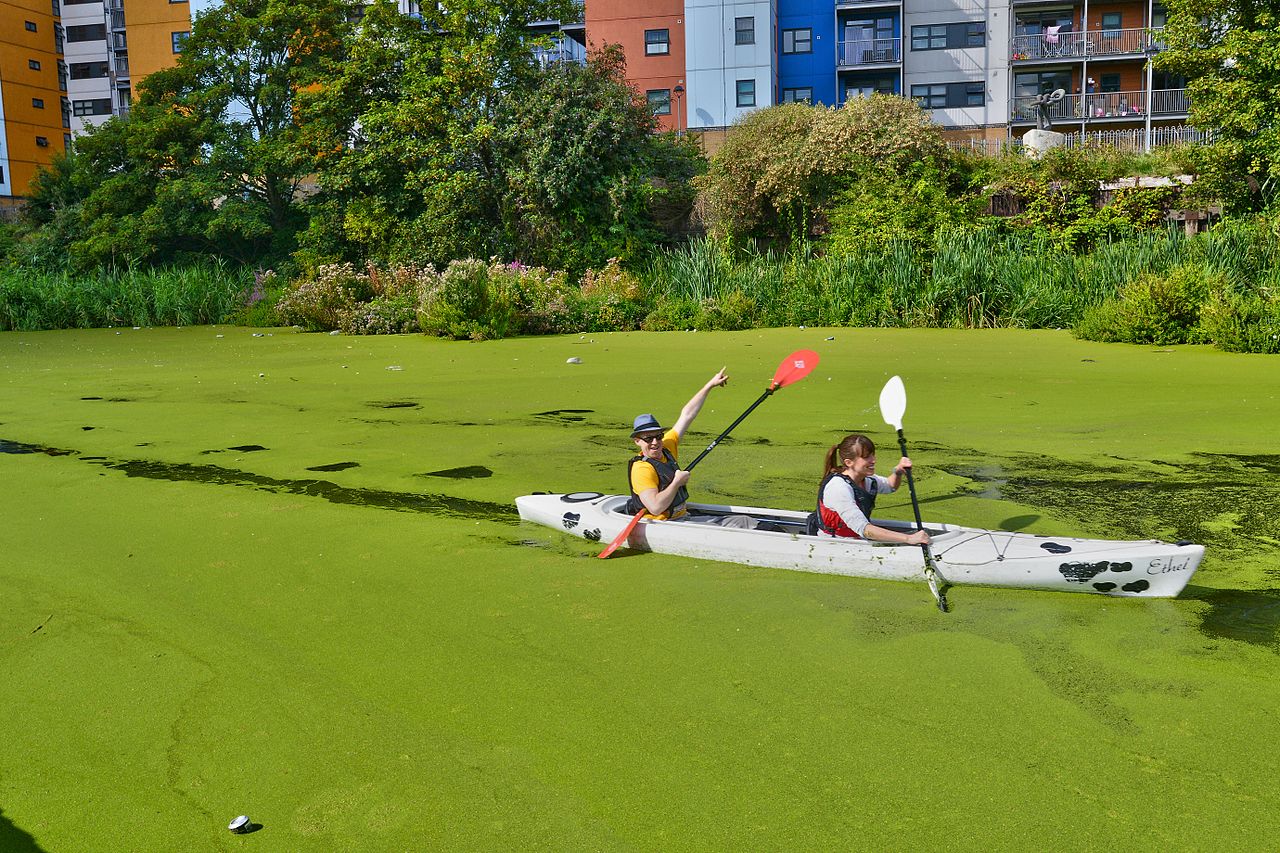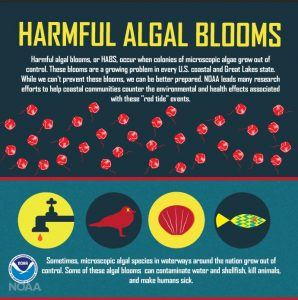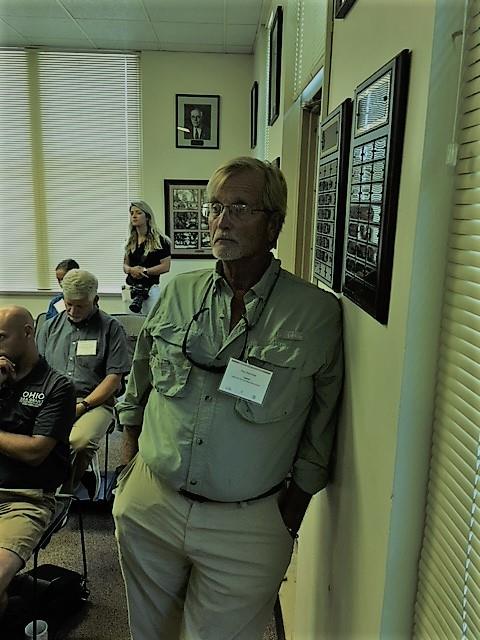
Charter boat captain says business is down by 25 percent
Lake Erie scientists are forecasting an algae bloom this summer that will be in the “significant” range, but expect it to be smaller than the 2017 bloom and nowhere the record 2011 and 2015 algae events.
Ohio State’s Chris Winslow told Great Lakes Now that variables come into play so he couldn’t say “we are out the woods” for the impact of the 2018 algae bloom, even though it’s estimated to be at the lower end of the “significant” range.

Chris Winslow, Director, Ohio Sea Grant College Program, Photo by Gary Wilson
Winslow said the numerical score of “6” on the severity index addresses the expected size of the bloom, but it can’t predict where it will be in the lake. That’s dependent on the wind, according to Winslow.
Winslow directs the Ohio Sea Grant Program and he led the algae forecast presentation by the National Oceanic and Atmospheric Administration (NOAA) and a collaboration of regional scientists.
The presentation took place at Ohio State’s Stone Lab on Gibraltar Island in Lake Erie.
The annual forecast event was attended by researchers, Ohio agency and elected officials, representatives of the Lake Erie Charter Boat Association and agricultural interests.
NOAA Oceanographer Richard Stumpf commenting on the early start of this year’s bloom told attendees that the “early start does not change the forecast severity, because the bloom is determined by the amount of phosphorus that goes into the water.”

Harmful algal blooms, or HABs, are a growing problem in every U.S. coastal and Great Lakes state. Image by noaa.gov
NOAA scientists said in a statement the size of the bloom “is not necessarily an indication of how toxic it is. The toxins in a large bloom may not be as concentrated as in a smaller bloom.”
The agency is developing tools to predict how toxic blooms will be.
NOAA’s forecast followed by a day Ohio Gov. John Kasich’s announcement of an executive order designed to reduce nutrient runoff from agriculture operations that send phosphorous to the lake.
In a press release Kasich said “it’s clear that more aggressive action is needed, especially to reduce or eliminate the algae blooms that have marred the western basin for years. This executive order is intended to kick those efforts into overdrive.”

Ohio Governor John Kasich at #FITN in Nashua, NH, Photo by Michael Vadon via flickr.com cc 2.0
Kasich is in his last months in office based on term-limits.
Kasich and Ohio legislators have been considering tighter restrictions on farmers since the 2014 algae bloom caused Toledo to be without drinking water for three days. Farmers have steadfastly resisted regulations saying the voluntary actions they employ are making progress in reducing runoff.
Charter boat Captain Paul Pacholski attended the presentation and he told Great Lakes Now that Kasich’s order “is a good step forward” as it targets the watersheds that are most filled with pollutants. But he said past reliance on voluntary action by farmers following the Toledo crisis setback a chance of progress by four years.
Pacholski is President of the Lake Erie Charter Boat Association.

Lake Erie charter boat captain Paul Pacholski watching algae presentation, Photo by Gary Wilson
Pacholski expressed frustration primarily with Ohio legislators saying that he has been “working with legislators for five or six years now and they have been unwilling to act.”
He says that his clients monitor algae bloom forecasts and his business was off by 25 percent in 2017 and it could be worse in 2018.
Don Scavia said in a statement that “until the phosphorus inputs from agriculture are reduced significantly and consistently so only the mildest blooms occur, the people, ecosystem and economy of this region are being threatened.”
Scavia is a University of Michigan aquatic ecologist and a member of the algae forecast team.
Since 2008, the Lake Erie algae severity index score has been in the “mild” range only twice.
Featured Image: Negotiating algae one stroke at a time, Photo by Aleem Yousaf via wikimedia.org cc 2.0
—————————
Editor’s note: Great Lakes Now is tracking scientific, legal and policy news for Lake Erie algae and will update stories as events warrant.
1 Comment
-
The Lake Erie algae bloom! Its a human issue I eat the food that the farmer grow from its. The run off of the products that the fertilizer chemicals and cow waste make to produce my own waste I flush into daily. including are plastic and papers waste products that are desposes of into the the land fills we create that seep into the earth that eventually reaches the water chase again. What more can I say that we have become the most destructive creature on the planet who have destroyed 40 percent of the forests and wildlife in the last 50 years on the planet. When are we going to realize water and air on this planet is the most important thing for the future of are young. Lets clean are region up before we kill such a beautiful thing that just doesn’t belong to just the humans race. Were All to Blame!
Someone who cares




